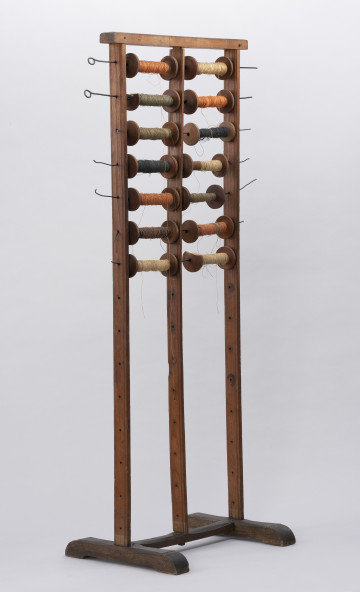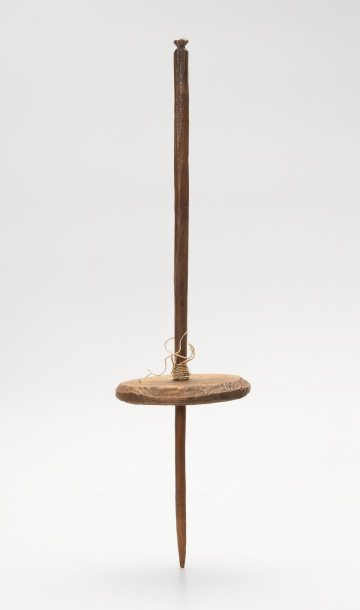
Weaving shuttle
1880 — 1920
National Museum in Szczecin
Part of the collection: Folk weaving
Because of its appearance, the reed, which is one of the components of the loom, was formerly called a weaving comb. Its frame is constructed of wooden slats, in which, with the help of tarred rope, thin flexible rungs are attached. Traditionally, they were made of reeds or wood, and eventually also of metal. The primary task of the reed is to keep the warp threads in order and to nail the weft threads to the already woven part of the fabric. It is set in a movable frame, called a beater. It is an interchangeable element because, depending on the type of fabric you want to make, reeds of different densities are used. The manufacture of weaving combs was carried out by craftsmen called a wood turner. The making of such a tool was a several-step process and required a great deal of care. Producers usually sold their products themselves at fairs or in door-to-door trade. The demand for them was high because, in the past, almost every rural woman knew how to weave and tried to have the necessary equipment at home to do so, including several different reeds. Moreover, they were sometimes part of the bride's dowry. The piece on display dates from the 19th or early 20th century. It has been preserved in good condition, the delicate rungs have not deteriorated. On the edge of one of the posts, which form the shorter sides of the reeds, a geometric mark consisting of the letter X and two rhombuses, a kind of signature of the craftsman, was carved. It was still common in the 1st half of the 20th century for wood turners to put marks on their products to identify their makers. Agnieszka Słowińska
Author / creator
Object type
handloom component, reed
Technique
planing, tying (assembly)
Material
wood, cane, twine
Origin / acquisition method
donation
Creation time / dating
Creation / finding place
Owner
Muzeum Narodowe w Szczecinie
Identification number
Location / status

1880 — 1920
National Museum in Szczecin

1801 — 1939
National Museum in Szczecin

1890 — 1939
National Museum in Szczecin
DISCOVER this TOPIC
Museum of King Jan III's Palace at Wilanów
DISCOVER this PATH
Educational path